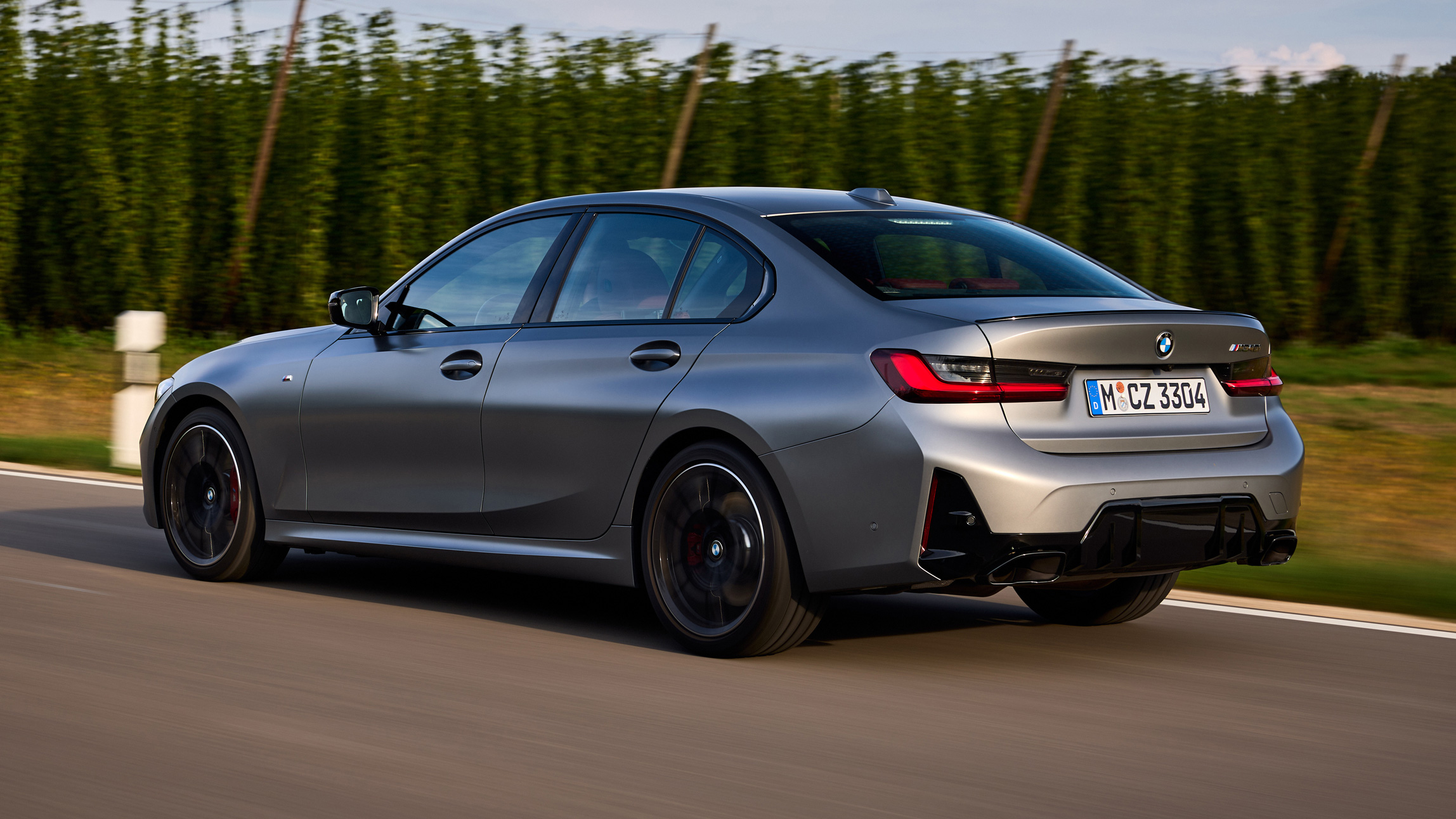When it comes to long-term vehicle maintenance, one of the most critical and costly components is the timing mechanism. Many vehicles rely on timing belts, which often require replacement at intervals of 60,000 to 100,000 miles.
However, vehicles equipped with timing chains offer a major advantage: they are designed to last the life of the engine. In some cases, they even outlast the car itself.
If you’re looking for a vehicle that will save you the cost and hassle of timing belt replacements, here are 10 vehicles with timing chains known for their exceptional durability.
1. Toyota 4Runner (All Model Years)
Toyota’s rugged 4Runner SUV has long been a symbol of durability and longevity. With a V6 or V8 engine that uses a timing chain instead of a belt, many 4Runners surpass 300,000 miles without ever needing major engine work.
Much like the fourth-generation Toyota Tacoma, the 2025 Toyota 4Runner has been completely redesigned from the ground up. Built on the same TNGA-F platform, the new 4Runner features a boxed ladder frame combined with a multi-link coil live rear axle, while retaining a double wishbone independent suspension up front.
This setup enables the all-new 4Runner to tow up to 6,000 pounds when equipped with the 2.4-liter turbocharged inline-four engine delivering 278 horsepower and 317 lb-ft of torque.
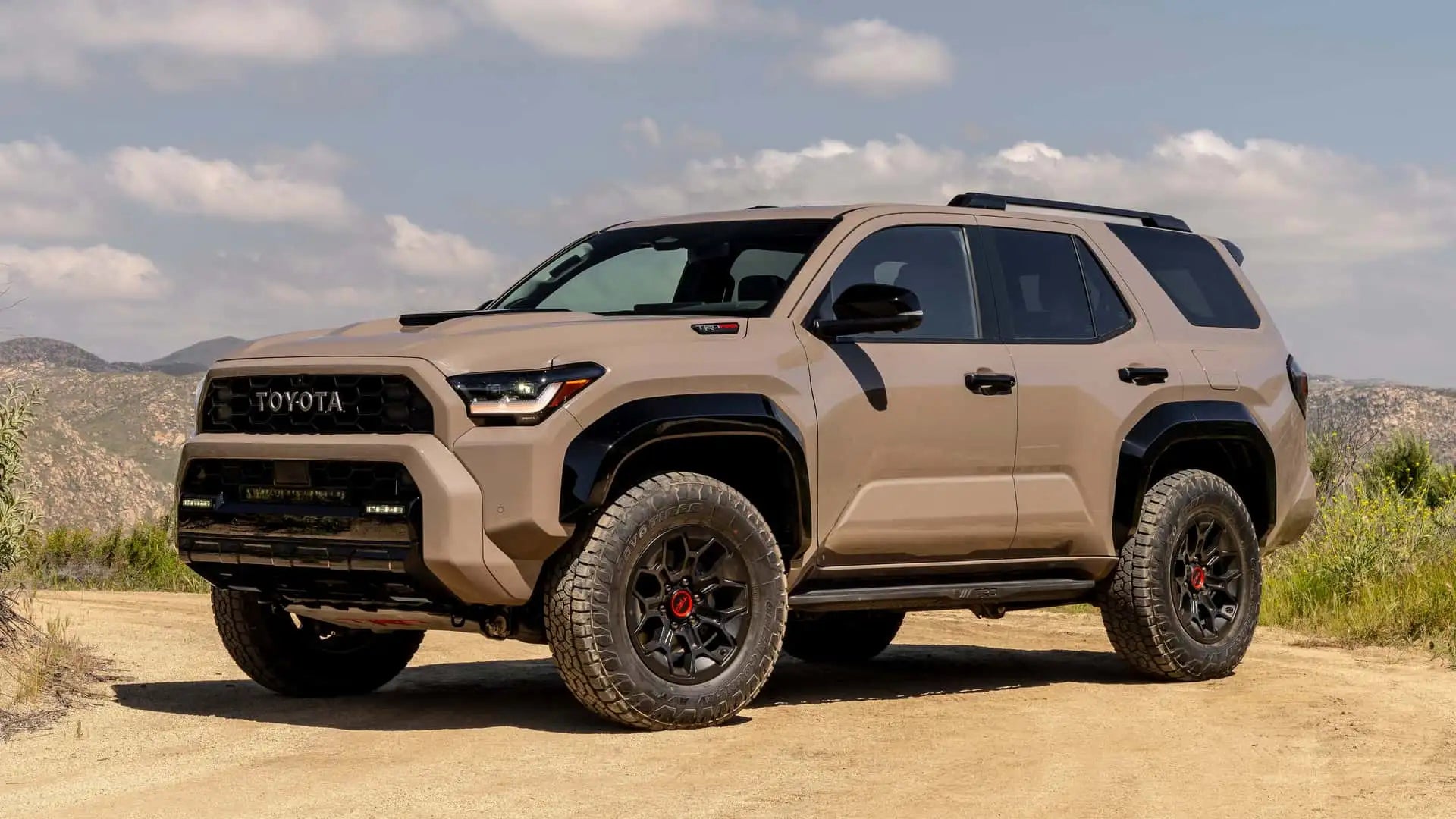
Notably, the 4Runner will be offered with two versions of this engine, the second being the i-Force Max hybrid, which generates 326 horsepower and 465 lb-ft of torque, thanks to a 48-horsepower electric motor positioned between the engine and transmission.
Replacing the previous 4.0-liter V-6, this turbocharged hybrid four-cylinder provides an 86-horsepower increase and also supports a 2.4-kW 120-volt AC inverter for powering electronic devices.
All versions of the 2025 4Runner will come paired with an eight-speed automatic transmission, delivering power either to the rear wheels or through a full-time or part-time 4WD system, depending on the selected trim.
Rear-wheel-drive variants will benefit from an automatic limited-slip differential, while all 4WD models will include electronically controlled Active Traction Control along with the auto LSD.
Timing Chain Reliability:
Toyota’s chain design in the 4.0L V6 is robust, often outlasting the vehicle’s body and frame.
2. Honda Accord (2008 and Newer 2.4L Models)
While older Honda engines used timing belts, newer 2.4L i-VTEC engines feature timing chains. These engines have become a staple in reliable commuting and family cars.
The 2008 Honda Accord offers a selection of engines that balance performance and fuel efficiency. The LX and LX-P sedan trims are powered by a 2.4-liter four-cylinder engine generating 177 horsepower and 161 pound-feet of torque.
An enhanced version of this same 2.4-liter engine, which delivers a class-leading 190 horsepower, comes standard on EX sedans as well as on all coupe variants. Both four-cylinder engines come standard with a five-speed manual transmission, while a five-speed automatic is available as an option.
For those choosing the EX trims, a 3.5-liter V6 engine is also available, producing 268 horsepower and 248 lb-ft of torque. Typically, this engine is paired with a five-speed automatic transmission, though buyers of the V6-equipped coupe can opt for a six-speed manual.
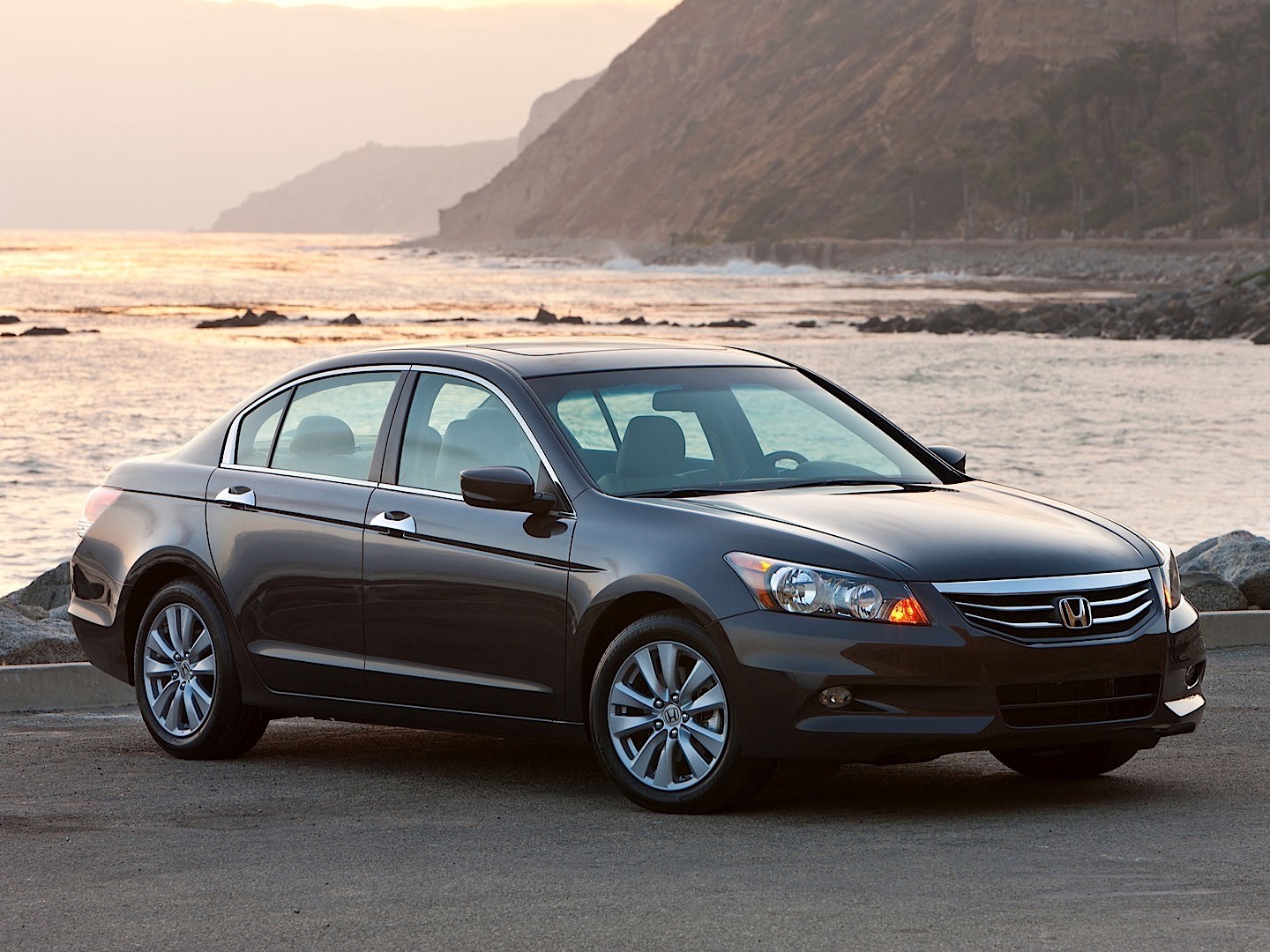
Fuel economy is a strong suit for the Accord. With automatic transmissions, both four-cylinder engines achieve 21 mpg in the city and 31 mpg on the highway. The six-cylinder with the automatic earns ratings of 19 mpg city and 29 mpg highway.
These figures match those of the Toyota Camry, which leads the segment in fuel efficiency, and outperform all other competitors in the class. The V6 coupe equipped with the six-speed manual is rated at 17 mpg city and 25 mpg highway, as it does not include the cylinder-deactivation feature standard on other V6 models.
Timing Chain Reliability:
Many Accords with this engine reach 250,000+ miles with only routine oil changes, and timing chain issues are extremely rare.
3. Chevrolet Silverado 1500 (5.3L V8 Vortec Engine)
Chevy’s 5.3L V8 Vortec engine is one of the most reliable truck engines ever produced. Built for hauling and longevity, the engine uses a timing chain that requires no scheduled maintenance.
The Chevrolet Silverado 1500 had a rocky launch when it was last redesigned in 2019, but Chevrolet has made numerous updates since then to address the truck’s early missteps.
The 2022 Silverado 1500 receives the most significant round of changes yet, including a thoroughly upgraded interior, a larger infotainment screen, a restyled front end, an updated engine lineup, and the introduction of the ZR2 trim, which focuses on off-road performance.
Inside, LT trim levels and above now feature an eye-catching 13.4-inch horizontally oriented touchscreen that seamlessly integrates into a fully digital, configurable instrument cluster. Other interior enhancements include a redesigned center console, improved seats, and higher-quality trim materials.
One notable change is the move from a column-mounted gear shifter to a more modern, console-mounted drive selector. Altogether, these revisions make the interior more user-friendly and bring it in line with the refined, functional cabins buyers now expect from full-size pickups.
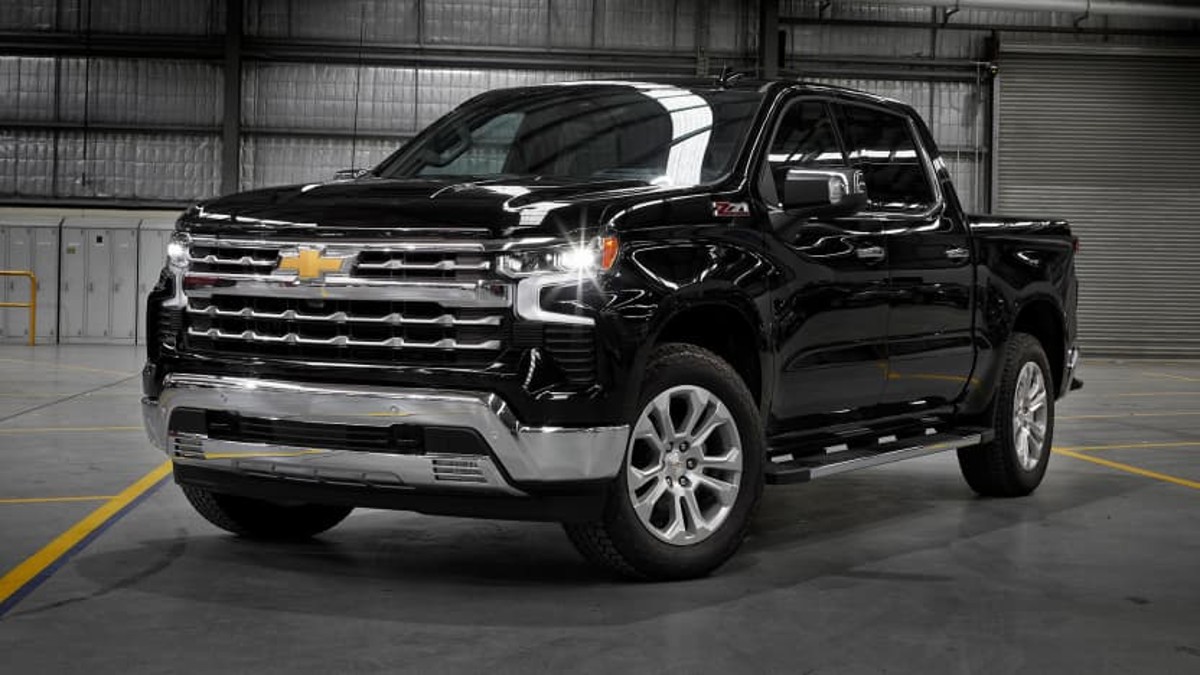
Chevrolet has also dropped the 4.3-liter V6 from the Silverado’s engine offerings, leaving four available powertrains. The turbocharged 2.7-liter four-cylinder engine now produces 430 lb-ft of torque—up from 348 lb-ft—thanks to significant tuning improvements.
The accompanying eight-speed automatic transmission has been revised to make better use of the engine’s increased torque, delivering improved acceleration while maintaining decent fuel efficiency. The Silverado still offers two V8 options and a diesel-powered six-cylinder for those seeking more power or towing capability.
The all-new Silverado ZR2 is designed with serious off-roaders in mind and takes cues from the midsize Colorado ZR2. It’s equipped with special suspension dampers and custom-tuned springs that allow for greater wheel articulation and control in rugged terrain.
It also features locking front and rear differentials, ZR2-specific skid plates, 33-inch off-road tires, and a redesigned steel front bumper to enhance ground clearance. However, it’s important to note that while the ZR2 is highly capable off-road, it isn’t as specialized for high-speed desert driving as rivals like the Ford F-150 Raptor and Ram 1500 TRX.
In the used market, models like the Certified 2022 Chevrolet Silverado 1500 RST Crew Cab can be found for prices well below market average.
One example is listed at $45,995—$9,290 under market—with 18,950 miles, no reported accidents, and a single owner. It includes a 5’10” bed, 6.2-liter V8 engine, all-wheel drive, and features such as a back-up camera, Bluetooth, navigation, and keyless entry/start.
Another example is the 2022 Silverado 1500 ZR2 Crew Cab, priced at $49,953—$6,199 below market—showing 15,540 miles and similar usage history. It includes leather seats and a similar equipment list, highlighting the broad availability of well-equipped used models across the country.
Timing Chain Reliability:
These chains rarely fail and are known to last upwards of 300,000 miles, often outliving the truck’s transmission or body.
4. BMW 3 Series (E90, F30 – 2012 and Up, N20/N52 Engines)
Modern BMW engines like the N52 and N20 utilize timing chains. Unlike older BMWs with problematic plastic guides, these engines have more refined and durable timing systems.
The 2025 BMW 3 Series continues its legacy as a refined and performance-focused compact luxury sedan. One of the most popular trims in the lineup is the 330i 4-door sedan, which is powered by a 2.0-liter turbocharged inline-four mild hybrid engine paired with an 8-speed shiftable automatic transmission. This configuration delivers a combined fuel efficiency of 31 MPG and sends power to the rear wheels.
The 2025 3 Series offers a starting MSRP of $45,950 and provides seating for up to five passengers. With a cargo capacity of 16.9 cubic feet and a curb weight of 3,644 pounds, it strikes a balance between utility and agility. The vehicle is backed by a basic warranty of 4 years or 50,000 miles, and final assembly takes place in Mexico.
In terms of fuel and MPG specifications, the estimated monthly fuel cost is around $156. The 3 Series requires premium unleaded fuel and achieves EPA-rated mileage figures of 28 MPG in the city and 35 MPG on the highway.
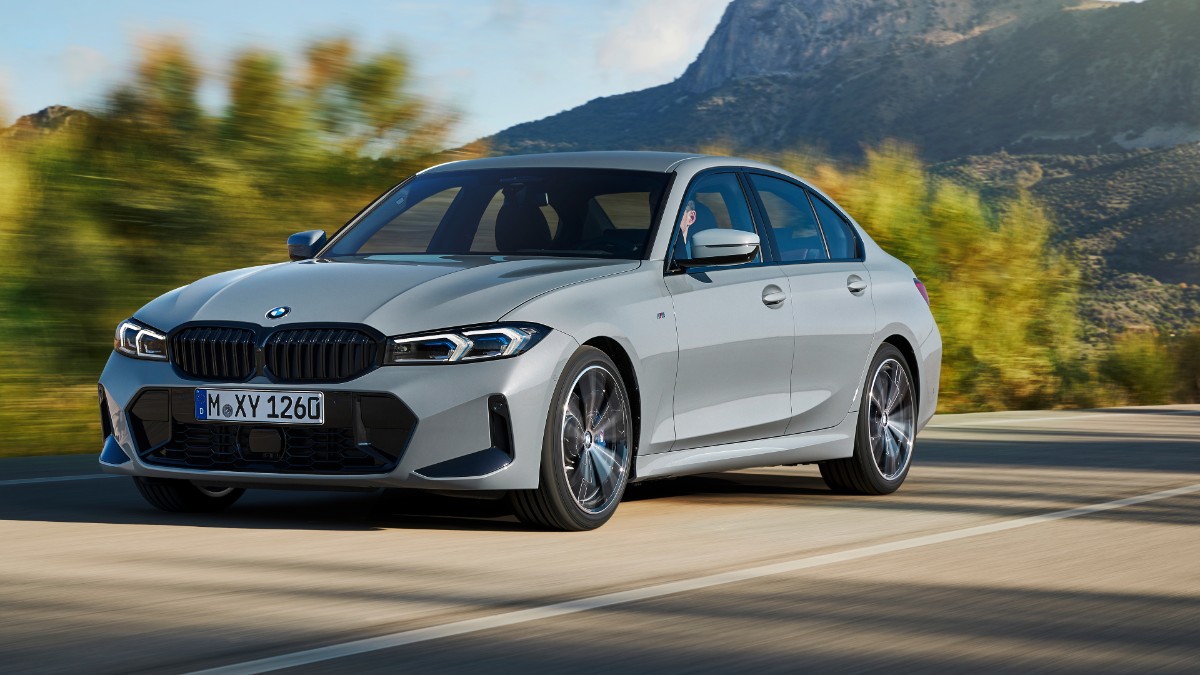
For those interested in purchasing, the 2025 BMW 3 Series is widely available, with 2,035 listings currently on the market. Some examples include a 330i xDrive Sedan priced at $47,988, another at $44,590, and a rear-wheel-drive 330i Sedan listed for $41,590.
Mechanically, the base engine size for the 2025 3 Series is 2.0 liters, and it features an inline-four-cylinder layout with a mild hybrid setup. The drivetrain includes an 8-speed shiftable automatic transmission, and rear-wheel drive remains the standard configuration.
The vehicle’s engineering and design also encompass a wide range of categories, such as suspension, dimensions, color options, seating dimensions (both front and rear), safety features, in-car entertainment, power and comfort features, instrumentation, tires and wheels, telematics, warranty coverage, mechanical options, and a variety of packages. Additionally, buyers can choose from several safety and security, interior, and exterior options to tailor the 3 Series to their preferences.
Timing Chain Reliability:
When properly maintained with regular oil changes, timing chains on these BMWs can exceed 200,000 miles, with failures being extremely uncommon.
5. Nissan Frontier (4.0L V6 Engine)
The Frontier’s 4.0L V6 engine, known as the VQ40DE, uses a timing chain and has earned a reputation for bulletproof reliability.
As far as midsize pickup trucks go, the Nissan Frontier might be the most “old school” of the bunch. The cab configurations, bed sizes, powertrain, and overall layout offer combinations that are somewhat unique within this segment. Despite its anachronistic underpinnings, the Frontier still includes plenty of modern-day features that help it remain competitive.
Looking at the current landscape of midsize pickups, many models have been either reintroduced or heavily refreshed. Notable examples include GM’s Chevrolet Colorado and GMC Canyon, the Toyota Tacoma, and the Ford Ranger—all of which now offer turbocharged engines and, in Toyota’s case, an optional hybrid powertrain.
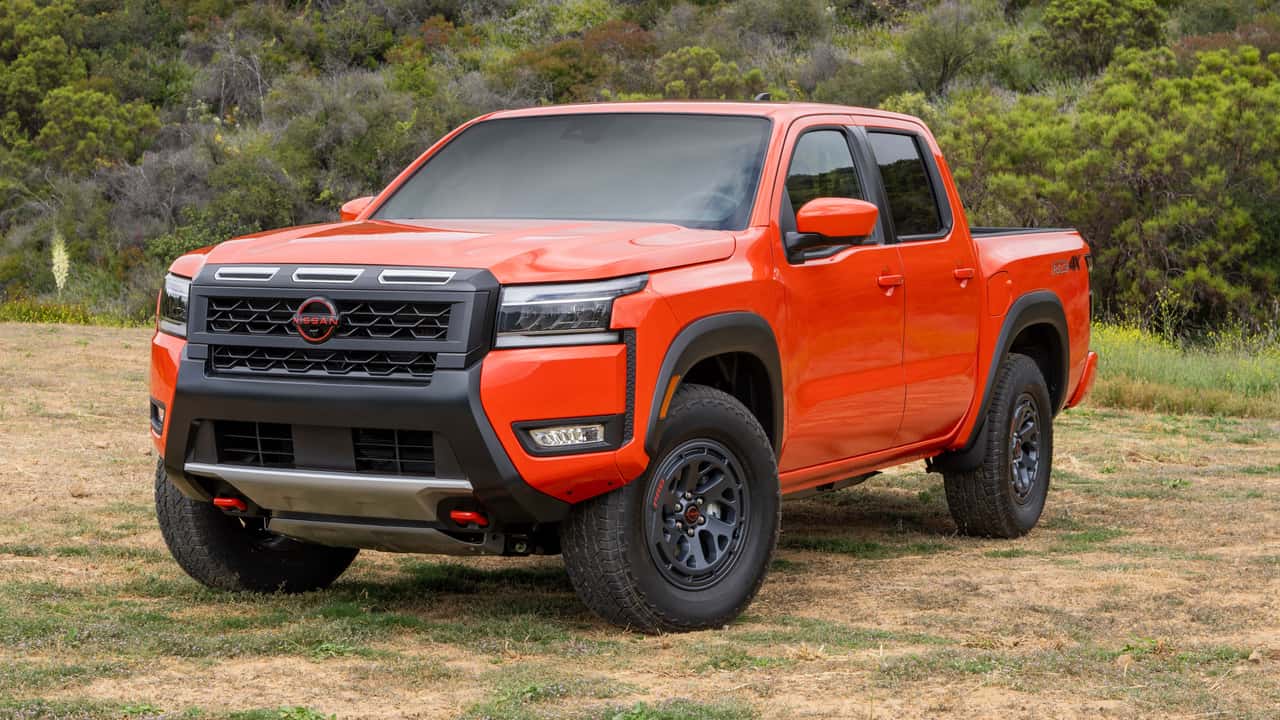
In contrast, the Jeep Gladiator, Honda Ridgeline, and Nissan Frontier continue to rely on naturally aspirated V6 engines, maintaining a more traditional setup.
The 2025 Nissan Frontier, though still relatively new in its current generation, brings several updates for the model year. It now offers an optional 12.3-inch infotainment screen equipped with wireless Android Auto, as well as a 360-degree exterior camera system.
Standard safety equipment includes lane-departure warning, automatic high-beam headlamps, Automatic Emergency Braking with Pedestrian Detection, and adaptive cruise control. However, for many buyers, the most welcome addition might be the newly standard tilt-and-telescoping steering wheel.
Timing Chain Reliability:
Many owners report well over 250,000 miles without touching the chain making the Frontier an ideal choice for those who want low maintenance costs.
6. Ford F-150 (3.5L EcoBoost and 5.0L Coyote Engines)
Ford’s EcoBoost and Coyote engines use timing chains instead of belts, giving America’s best-selling truck a significant edge in long-term reliability.
The Ford F-150 full-size pickup has transformed into a highly adaptable, all-purpose vehicle—just as ready to handle demanding work tasks as it is to make a statement in upscale surroundings.
It comes in a wide range of trim levels, starting with the basic XL and topping out with the luxurious Platinum Plus. Buyers can choose from a variety of powertrains, including a classic V-8, two different turbocharged V-6 engines, and a hybrid option.
The F-150 is also available in three cab sizes—regular, Super, and Crew—and offers three different bed lengths to accommodate varying needs. For those planning to venture off the beaten path, the off-road-oriented Tremor model adds specialized capability.
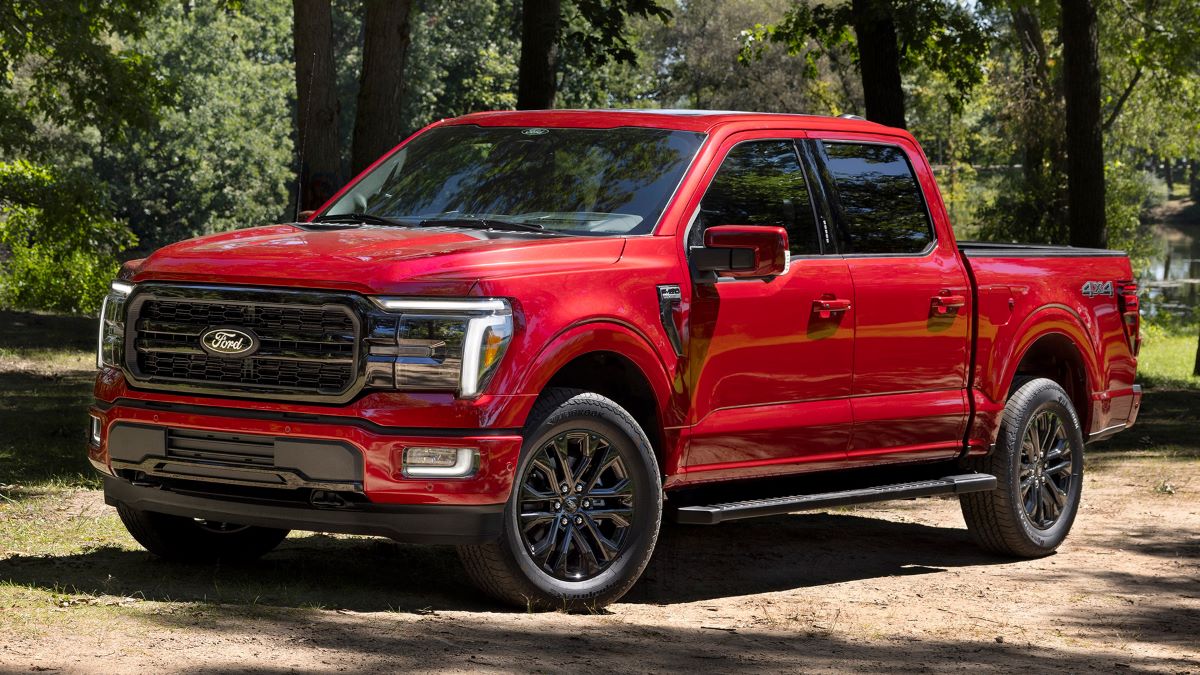
Every version includes a 12.0-inch infotainment display, bold interior styling, and an abundance of cleverly placed storage cubbies. Towing and hauling remain fundamental strengths of the F-150, and features like the available onboard scales help users stay within payload limits.
That said, competition in the full-size pickup market is fierce. Buyers should take the time to compare alternatives like the Ram 1500 and Chevrolet Silverado before making a final decision.
The Ram stands out with its premium interior and smooth ride, while the Silverado impresses with its available Super Cruise hands-free driving system—which, unlike Ford’s Blue Cruise, can be used even when towing. The full-size pickup segment is constantly shifting as automakers push boundaries and respond to each other’s innovations.
The “balance of power”—both in terms of performance and market leadership—is likely to continue shifting. So if you’re planning to buy one of the big—and yes, they are big—three pickups, it’s in your best interest to do thorough research beforehand.
Timing Chain Reliability:
Though early EcoBoost models had minor issues with chain stretch, updates have resolved these, and both engines are capable of exceeding 250,000 miles on the original chain with proper maintenance.
7. Lexus RX350 (2007 and Newer)
Why It Stands Out:
This luxury SUV features Toyota’s legendary 3.5L V6 engine (2GR-FE), which uses a durable timing chain. It combines Lexus luxury with Toyota reliability.
The 2025 Lexus RX 350 offers a balanced combination of power, comfort, and refinement that keeps drivers content and passengers at ease. While some luxury midsize SUVs surpass it in terms of raw performance and interior spaciousness, the RX stands out as a well-rounded choice.
The 2025 RX 350 ranks #13 in the Luxury Midsize SUV category, earning a solid 8.5 out of 10. This rating is based on the analysis of 27 data points from various sources, evaluating everything from safety to reliability and value.
Performance-wise, the RX 350 prioritizes comfort and ease over excitement. The turbocharged four-cylinder engine makes 275 horsepower and 315 lb-ft of torque, paired with an eight-speed automatic transmission.
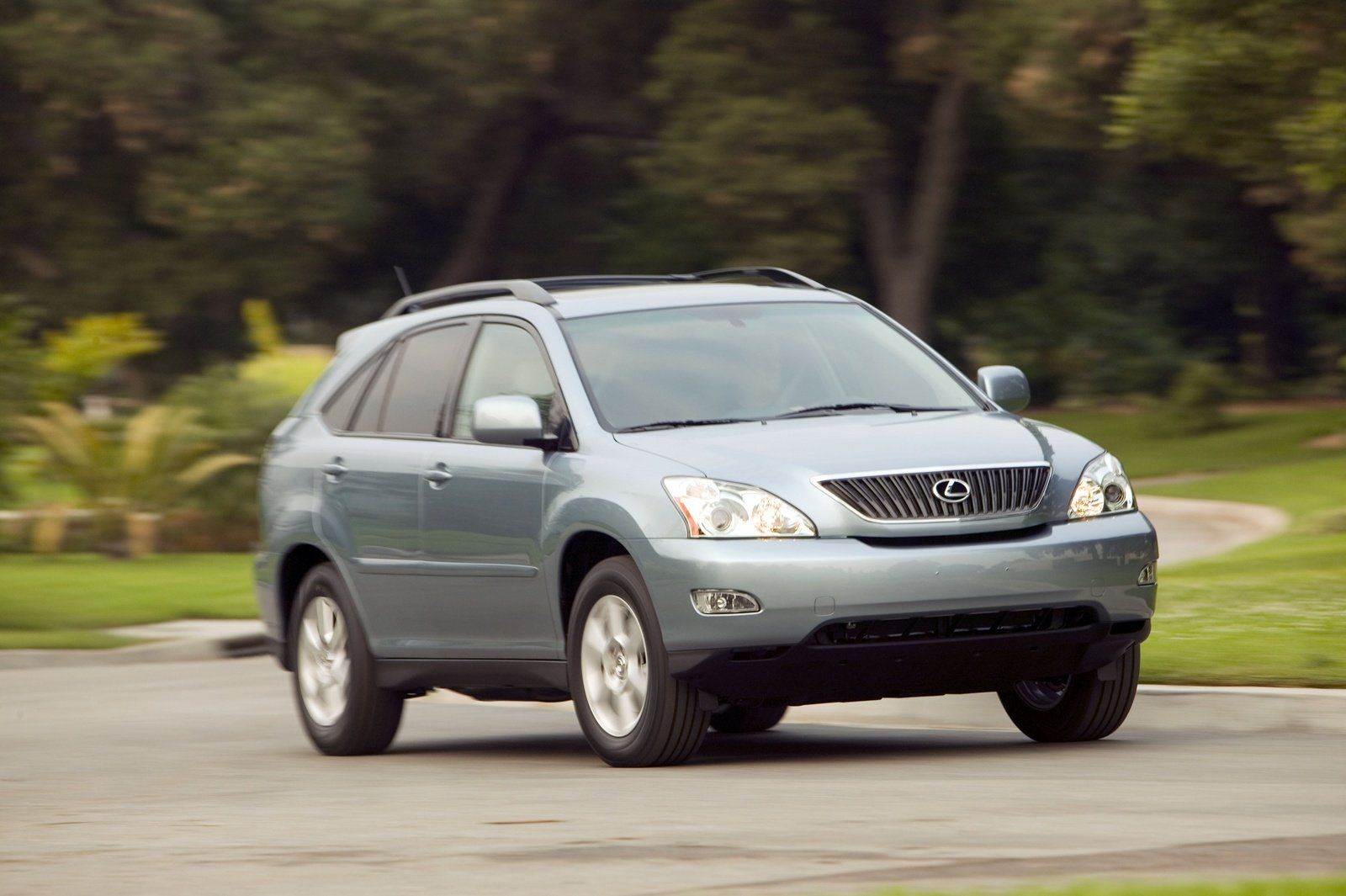
It performs well on pavement and can handle light off-road conditions. Front-wheel-drive models are predictable, while the F Sport Handling trim brings all-wheel drive and adaptive suspension, though it doesn’t transform the RX into a performance SUV.
The engine can sound strained under hard acceleration, detracting from its otherwise refined demeanor. Towing capacity is capped at 3,500 pounds—below the class average of 5,000 pounds.
In terms of fuel economy, the RX 350 delivers excellent results: 22 mpg city and 29 mpg highway for FWD models, and 21/28 mpg for AWD variants. This efficiency is impressive for a turbocharged SUV.
The interior design emphasizes simplicity and modernity. A user-friendly infotainment system replaces the frustrating trackpad from earlier versions. Standard luxury features are plentiful, even if the cabin appears more subdued than flashier rivals. The cabin is quiet at cruising speeds, though engine noise becomes noticeable during rapid acceleration. The RX seats five comfortably, with ample space in the front row. Rear-seat passengers, particularly taller ones, might find headroom limited.
Cargo space measures 29.6 cubic feet behind the second row and expands to 46.2 cubic feet with the seats folded—less than several competitors. A power liftgate is standard, with a hands-free version available as an upgrade.
Timing Chain Reliability:
Reports show that these engines easily last over 300,000 miles, and the timing chain is rarely, if ever, a concern for owners.
8. Mazda CX-5 (2.5L Skyactiv-G Engine)
Why It Stands Out:
Mazda’s Skyactiv engines are known for their efficiency and low maintenance requirements. The 2.5L variant used in the CX-5 is equipped with a chain-driven timing system.
The 2023 Mazda CX-5 upholds the brand’s well-earned reputation for sharp handling while delivering an experience that feels close to luxury, all at a mainstream price. This unique blend of agile driving dynamics and refined interior quality makes the CX-5 stand out in the compact SUV class.
It’s especially appealing in higher trims equipped with the 256-hp turbocharged four-cylinder engine, which adds the performance to match the SUV’s responsive chassis. The base 187-hp engine isn’t as lively but still benefits from the CX-5’s standard all-wheel drive and well-tuned suspension.
Regardless of the engine, the CX-5 delivers a driving experience that few competitors can match. Though it isn’t as roomy as the Honda CR-V or Toyota RAV4, the Mazda’s upscale feel and fun-to-drive nature offer something distinctly more engaging than the class norm.
For 2023, the CX-5 continues largely unchanged, aside from a newly available Rhodium White exterior paint color. It now shares showroom space with the similarly sized Mazda CX-50, though both models will remain on sale.
The CX-5 holds the #4 spot in the compact SUV rankings, trailing only the Honda CR-V, Mazda CX-50, and Volkswagen Tiguan. Its pricing starts at $28,075 and tops out at $41,025, depending on trim and options.
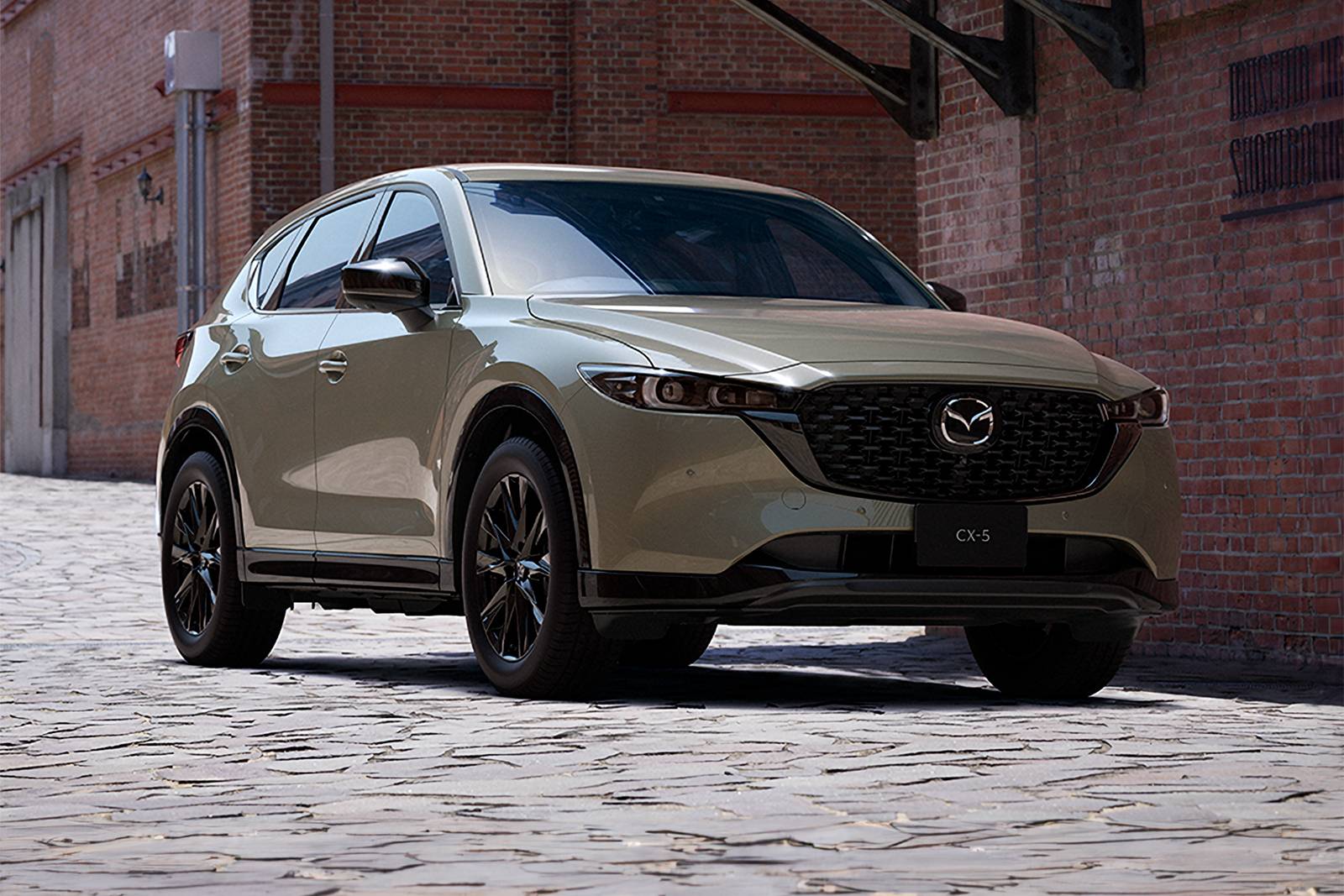
Under the hood, the standard 2.5-liter four-cylinder engine offers 187 horsepower and responsive throttle performance around town. However, it feels underpowered during high-speed maneuvers like passing or merging.
The 256-hp turbocharged engine significantly improves acceleration and better aligns with the vehicle’s sporty nature. Both engines are mated to a smooth-shifting six-speed automatic transmission, and all-wheel drive is standard across the board.
The CX-5 shines when driven enthusiastically, with communicative steering and a ride that soaks up bumps without feeling soft or floaty. On winding roads, the chassis feels composed and confident, delivering a level of driving engagement rare in this class. In testing, the Signature model offered firm, responsive braking without being overly sensitive.
The CX-5’s towing capacity is capped at 2,000 pounds—not a standout figure, but still better than rivals like the Honda CR-V and Volkswagen Tiguan. If towing is a bigger priority, the larger Mazda CX-50 can handle up to 3,500 pounds when equipped with the turbo engine; otherwise, it matches the CX-5’s limit.
Fuel economy is solid for the segment. The base engine delivers 24 mpg in the city and 30 mpg on the highway, while the turbo variant achieves 22 mpg city and 27 mpg highway. In real-world testing at a constant 75 mph, the standard engine returned 32 mpg and the turbo version delivered 30 mpg—impressive figures given the added performance.
Inside, the CX-5’s top trims are impressive enough to be confused with an entry-level luxury vehicle. High-quality materials, clean design, and thoughtful ergonomics make for a refined cabin. Highlights include a floor-hinged accelerator pedal, a well-positioned steering wheel, and armrests that align across both front seats for optimal comfort.
That said, the CX-5 does make some compromises in practicality. It held only nine carry-on suitcases behind the rear seats in testing, although the cargo area features a flat load floor and useful interior storage, including a deep tray in the front of the center console and a multi-level bin.
Technology-wise, every CX-5 comes with a 10.3-inch infotainment display controlled primarily by a rotary dial and physical buttons. Voice commands and steering-wheel controls offer additional interaction, and both Apple CarPlay and Android Auto are standard. Mazda Connected Services are also included, offering remote vehicle access through a smartphone app, along with a subscription-based Wi-Fi hotspot.
Overall, the 2023 Mazda CX-5 remains a top choice for buyers who want a compact SUV that delivers more than just practicality. Its upscale interior, rewarding driving dynamics, and reasonable pricing make it a standout in a crowded field.
While it may not offer the most space or the highest tow rating, few vehicles in this segment manage to blend comfort, performance, and refinement as well as the CX-5.
Timing Chain Reliability:
Owners routinely report no issues with the timing chain even after 200,000 miles, as long as oil changes are performed on schedule.
9. Subaru Outback (2013 and Newer with FB Engines)
Why It Stands Out:
Subaru moved away from belts with its FB-series engines, opting for timing chains instead. This upgrade significantly improved long-term maintenance costs and reliability.
Popular among outdoor enthusiasts, the Subaru Outback brings more to the table than just standard all-wheel drive and a rugged demeanor. It provides a composed and comfortable ride, even over uneven or rough pavement, and offers generous interior space for both passengers and cargo.
Although some of the vehicle’s safety alerts can feel a bit overzealous, the inclusion of Subaru’s EyeSight driver-assistance features is a definite plus. The Outback’s go-anywhere appeal is further enhanced by available upgrades like a roof rack and seats trimmed in water-resistant upholstery, making it even more adventure-ready.
One notable drawback is the Outback’s exterior design, which has remained largely unchanged for over a decade. This may be a sticking point for buyers seeking a more modern look. The base naturally aspirated engine feels underpowered, and both available engines tend to idle somewhat roughly.
Another gripe is the increasing reliance on the touchscreen interface, with Subaru phasing out many of the physical buttons that offered more tactile control. Still, even with these shortcomings, the Outback remains a strong contender in its class, and we expect it to maintain its spot among our top recommendations heading into 2025.

When it comes to performance and fuel economy, the 2025 Outback lineup retains its core mechanical formula: flat-four engines paired with continuously variable transmissions and standard all-wheel drive.
The base 2.5-liter naturally aspirated boxer-four engine continues to serve as the entry-level option, producing 182 horsepower and 176 lb-ft of torque. Fuel efficiency is expected to stay consistent with last year’s EPA estimates at 26 mpg in the city and 32 mpg on the highway—making it the most economical choice in the lineup.
For buyers looking for more power, the 2.4-liter turbocharged boxer-four remains the upgraded engine option. It delivers a more robust 260 horsepower and 270 lb-ft of torque.
Despite the performance boost, fuel economy remains similar to previous model years, with estimates at 22 mpg city and 29 mpg highway. However, Wilderness trims equipped with the same turbo engine are expected to return slightly lower figures at 21 mpg in the city and 26 mpg on the highway.
Timing Chain Reliability:
These newer engines can easily go beyond 250,000 miles without a single chain-related problem something older Subaru owners couldn’t claim.
10. Mercedes-Benz E-Class (W212, M276 and M278 Engines)
Modern Mercedes E-Class models equipped with the M276 V6 or M278 V8 engines utilize chain-driven timing systems. These engines, especially post-2012 models, are robust and refined.
Following a comprehensive redesign for the 2024 model year, the 2025 Mercedes-Benz E-Class returns with a few key additions: a new rear-wheel-drive base variant and the debut of the high-performance Mercedes-AMG E53 Hybrid 4Matic+. Packed with advanced technology and engineered with refined powertrains, the E-Class takes its place among top-tier midsize luxury sedans like the Audi A6, BMW 5 Series, and Genesis G80.
The 2025 E-Class lineup welcomes several notable updates. A new rear-wheel-drive E350 base model has been introduced, offering a lower entry point into the range. Mercedes-AMG has also added the E53 Hybrid 4Matic+, a plug-in hybrid with serious performance credentials.
A center airbag positioned between the front seats now comes standard for enhanced safety. A new Patagonia Red paint option is available by special order, and MB-Tex leather-free upholstery has expanded to include the steering wheel, catering to buyers seeking animal-free interiors.
At first glance, the 2025 E-Class may evoke memories of traditional luxury sedans, but beneath its familiar exterior lies a thoroughly modern machine.
The cabin is outfitted with large digital displays, innovative powertrains, and a full suite of advanced safety features. Gone are any associations with floaty, old-school driving dynamics. Instead, the latest E-Class delivers poised handling, controlled body motions, and a surprisingly light feel through winding roads.
Two new versions expand the lineup for 2025. The more affordable E350 with rear-wheel drive serves as the new entry-level option. Meanwhile, the Mercedes-AMG E53 Hybrid 4Matic+ becomes the most powerful and dynamic E-Class variant currently available—at least until the E63 returns.
For 2025, the E-Class offers three distinct powertrain choices, all paired with a nine-speed automatic transmission. The E350 is available in both rear-wheel-drive and 4Matic all-wheel-drive configurations.
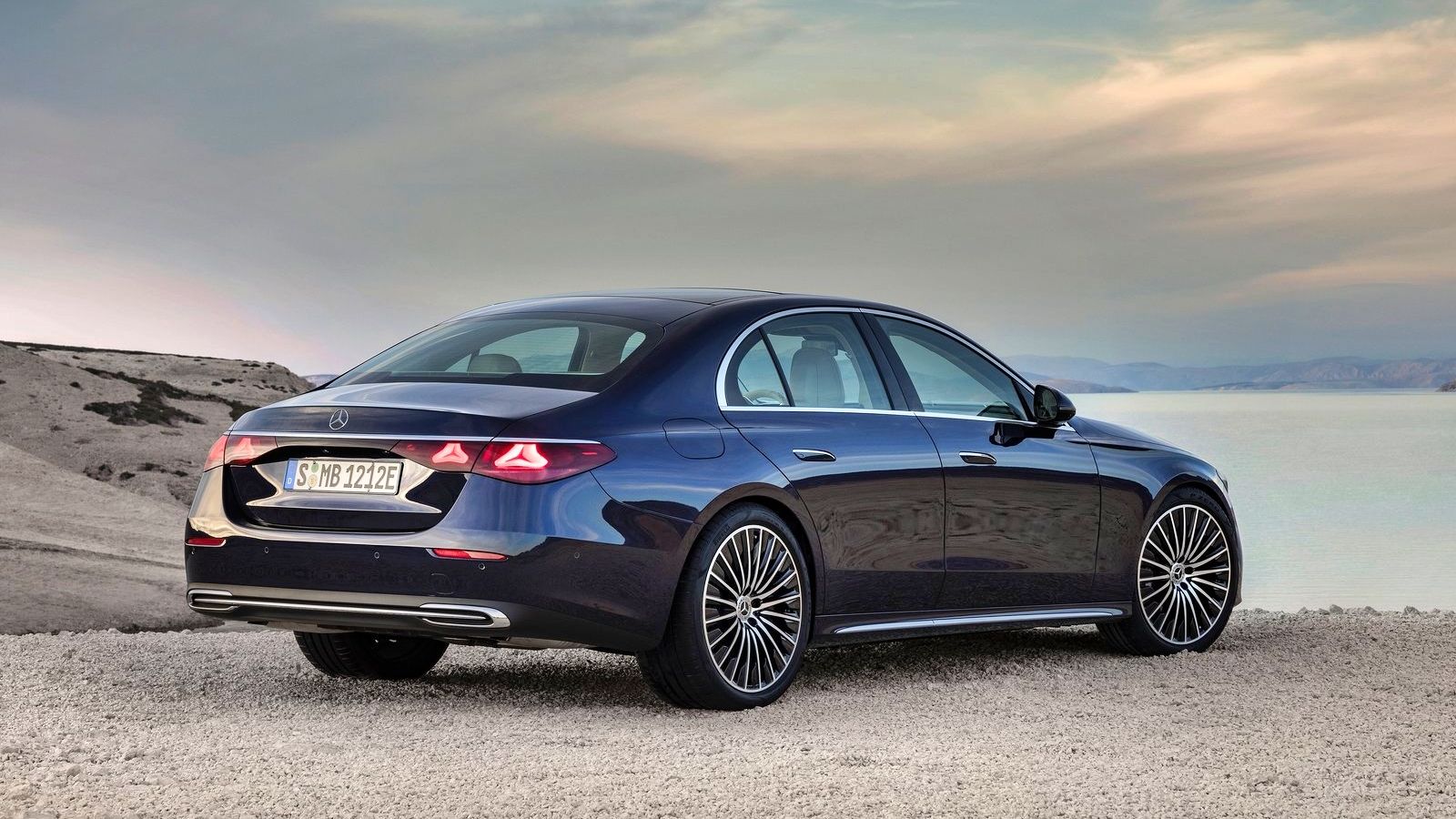
It uses a 2.0-liter turbocharged four-cylinder engine paired with a mild hybrid system that includes an integrated starter-generator. This setup produces 255 horsepower and 295 lb-ft of torque, with an additional boost of up to 20 horsepower and 148 lb-ft of torque available when needed.
In testing, the 2024 E350 4Matic accelerated from 0 to 60 mph in 5.9 seconds. Fuel economy for the E350 4Matic is rated by the EPA at 24 mpg in the city and 33 mpg on the highway, while the rear-wheel-drive version achieves a slightly better 25/33 mpg.
For those seeking more performance, the E450 4Matic steps things up with a 3.0-liter turbocharged inline-six engine, also supported by a mild hybrid system.
It generates 375 horsepower and 369 lb-ft of torque, with the same 20-horsepower and 148-lb-ft boost function as the E350. In past versions of the E-Class, this powertrain has delivered strong acceleration, smooth operation, and an engaging driving experience, though its auto stop-start system wasn’t as quick to react as we would prefer.
The EPA rates this powertrain at 22 mpg city and 31 mpg highway for the 2025 E-Class. It’s available in the E-Class sedan and comes standard in the E450 4Matic All-Terrain wagon.
Timing Chain Reliability:
While earlier models had issues with balance shaft gears, the newer engines with proper maintenance often go beyond 200,000 miles with original timing chains intact.
Timing chains have become increasingly favored in modern engines due to their durability and low maintenance.
When paired with regular oil changes and proper driving habits, the chains in the vehicles listed above frequently outlast the cars themselves.
If you’re aiming for long-term ownership with minimal surprise repair costs, these chain-driven vehicles are an excellent place to start your search.

